Vinews
No. 4 — May 18, 2020
Contents:
- Phomopsis Viticola
- Anthracnose Elsinoe ampelina
- Cumulative Growing Degree Days for the Seven Grape Growing Regions of Missouri from April 1 to May 16, 2020
- Weather Outlook
Phomopsis Viticola

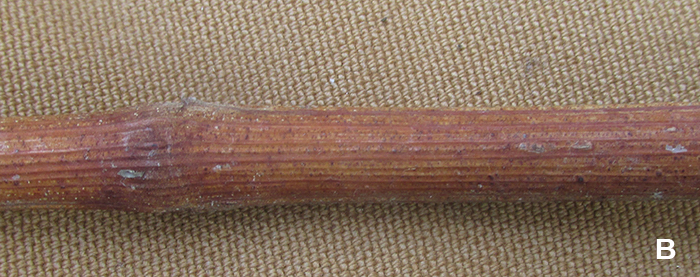
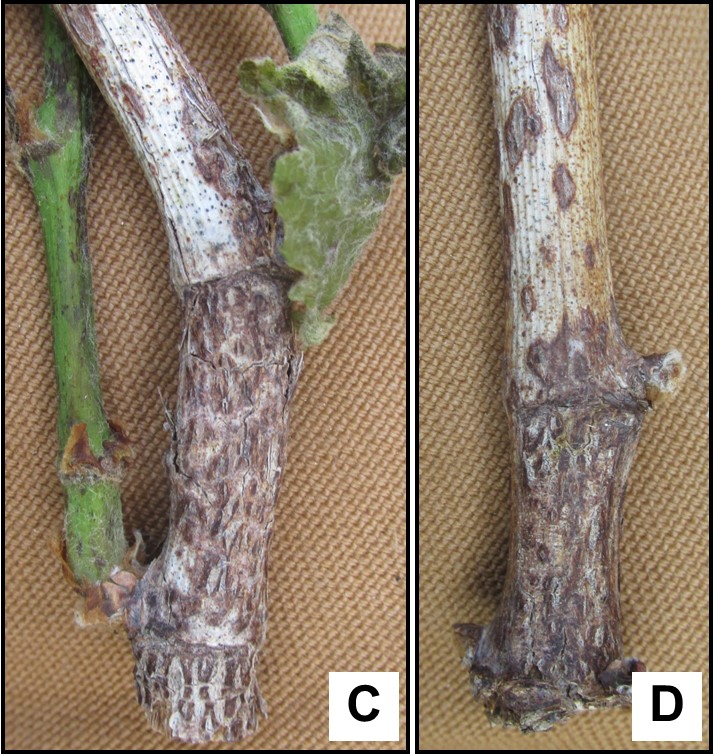
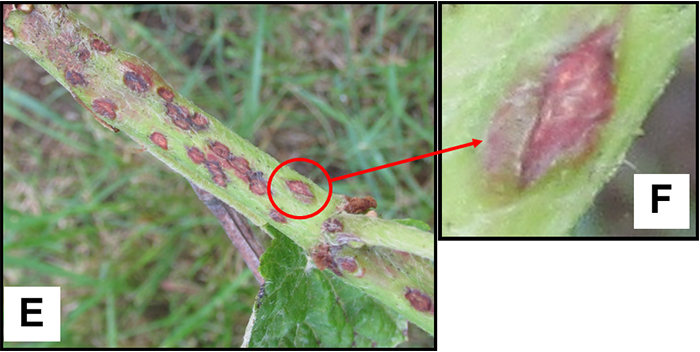
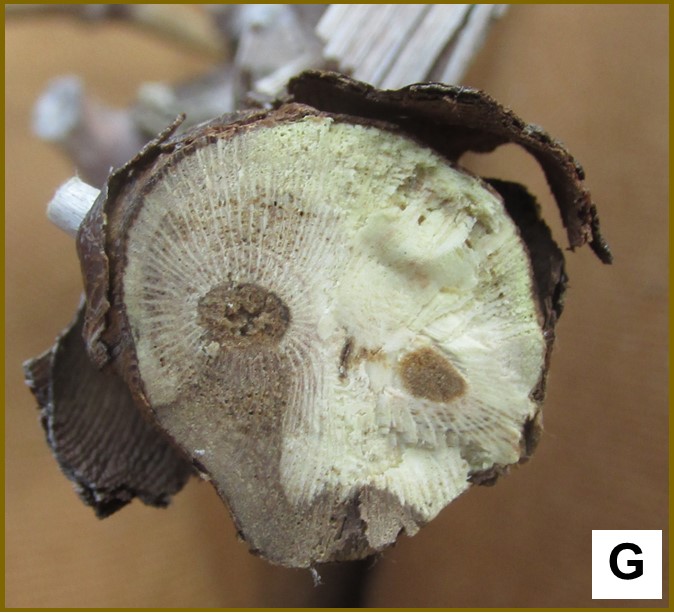
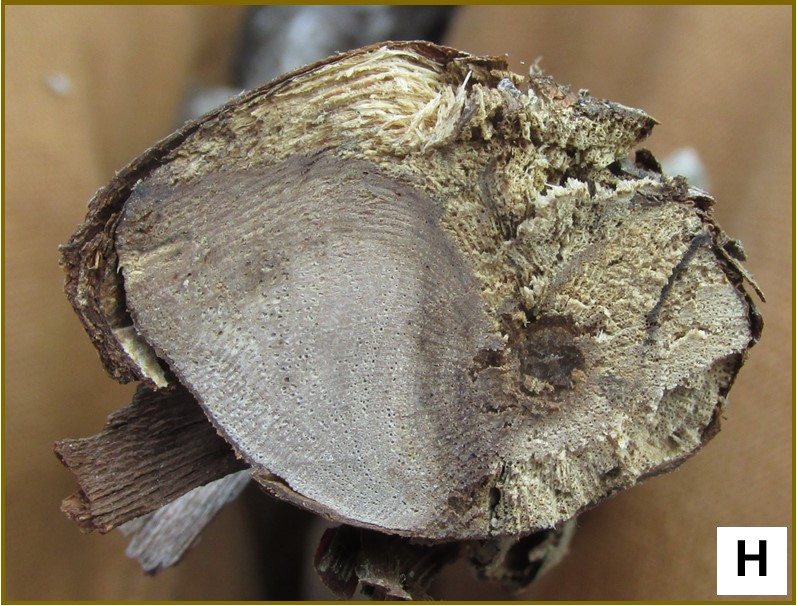
Anthracnose Elsinoe ampelina
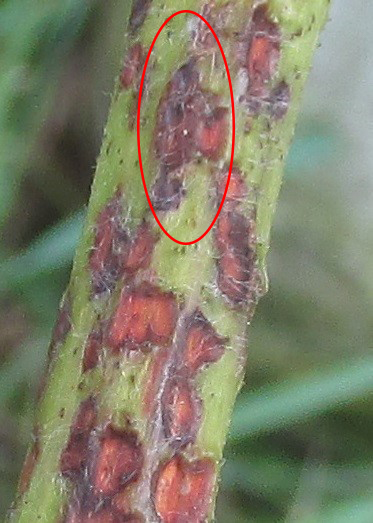
Often you read or hear that Anthracnose is a southern disease that thrives in hot humid environments. However, Anthracnose can be active at 36°F. At low temperatures Anthracnose needs 12 hours or more of wet tissue to cause infection. Over the last three weeks, many areas of Missouri have experienced these long wetting periods that have been exacerbated by below normal air temperatures.
The symptomology caused by Anthracnose on grape shoots can sometimes be confused with Phomopsis viticola lesions. Anthracnose lesions are round in shape and sunken whereas Phomopsis lesions are elongated and have raised edges (Figure 1).
Anthracnose can be controlled with Abound, Endura, Flint, Inspire Super, Mettle, Pristine, Quadris Top, Revus Top, Sovran, TebuStar, Topsin M, and Vintage. Good control is also provided by Captan and mancozeb products.
A good indicator species to determine if Anthracose is active is the Sycamore tree Platanus. Although the Sycamore is susceptible to a different strain of Anthracnose, Apiognomonia veneta, the environmental conditions needed for infection are similar to grape Anthracnose Elsinoe ampelina. Sycamore trees in Missouri are almost completely void of leaves right now as the result of Anthracnose caused by Apiognomonia veneta (Figure 2).
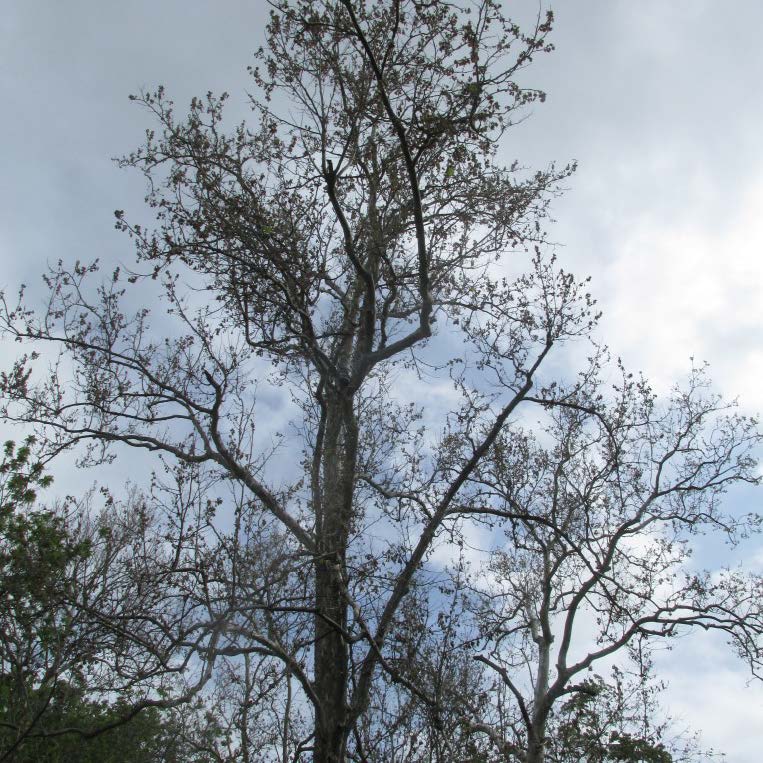

Cumulative Growing Degree Days for the Seven Grape Growing Regions of Missouri from April 1 to May 16, 2020
| Region | Location by County | Growing Degree Days1 | ||
|---|---|---|---|---|
| 2020 | 2019 | 30-year Average | ||
| Augusta | St. Charles | 367 | 476 | 512 |
| Hermann | Gasconade | 367 | 474 | 494 |
| Ozark Highland | Phelps | 373 | 527 | 538 |
| Ozark Mountain | Lawrence | 405 | 532 | 514 |
| Southeast | Ste. Genevieve | 379 | 501 | 536 |
| Central |
Boone | 382 | 468 | 483 |
| Western | Ray | 366 | 419 | 458 |
1 Growing degree days at base 50 from April 1 to May 16, 2020. Data compiled from Useful and Useable at https://mrcc.illinois.edu/U2U/gdd/. Click on link below to determine growing degree days in your area.
To determine the number of growing degree days accumulated in your area since April 1, use this tool.
Weather Outlook
Weather Outlook for May 25-29
- Forecast for 0.5 to 1.5 inches of rain. Above normal chance of precipitation
- Forecast daytime temperatures mid to upper 70s°F
- Forecast nighttime temperatures low 50s°F
Looking Back May 1-19, 2020
- Temperatures were 4 to 5°F below the normal. This is reflected in the number of GDD reported in the table above.